Matador Network's Blog, page 481
May 6, 2022
How to travel with breast milk

Breast pumping while traveling can be daunting, especially if it’s your first time. Being successful goes beyond just knowing the TSA regulations and breast milk storage. A holistic approach to traveling with breast milk that considers your comfort and stress level is essential.
As a first-time mother with a job that requires me to travel every few weeks across the US, I had to learn how to pump and store breast milk while traveling. I learned how to pump anywhere, from cozy airport pumping pods to fumbling in convention center bathrooms. There was so much variety in my TSA experiences that I learned the hard way the most efficient and painless strategies for traveling with breast milk by plane.
We hope you love the items we recommend! Just so you know, Matador may collect a small commission from the links on this page if you decide to make a purchase.
First, stock up on equipment and supplies
Photo: Nor Gal/Shutterstock
The first thing you’ll need before even boarding the plane is a few essential supplies, especially breast milk storage bags. A popular producer of postpartum products like nursing pads and nipple cream, Lanisoh, makes a sturdy and reliable version that doesn’t leak and that has well-marked measurements. You’ll need to store the milk you pump in these bags in order to transport it home.
Some pumps allow you to attach these storage bags directly to your pumping equipment, but you’ll need to check the exact specifications on your pump. Otherwise, you can use the collectors that come with your pump, then transfer the milk into storage bags. Pump brands like Medela sell breast storage systems that simplify the entire process. You might also need an ice pack and a tote to carry the collectors in; Medela also sells a breast milk cooler set that combines all these items.
Here’s how Elisabeth, new mom and editor at Matador Network, prefers to do it: She usually packs four collectors in the Medela tote, along with an ice pack. At the airport and on the plane, she pumps into those collectors (she finds this is much easier to do with the lighter and more discrete manual pump, but the downside is that you can’t pump both sides at the same time with it.)
Once she arrives at her destination, she transfers the fresh milk into the storage bags which she keeps in the fridge. Throughout her stay, she pumps into the collectors and keeps transferring the milk into the storage bags until they’re full (the maximum capacity on most brands is six ounces.) Depending on the length of her stay, she brings at least ten storage bags with her so that she doesn’t run out of space to store the breast milk.
More breast pump optionsMedela Pump In Style electric double breast pump. This pump is compact, has varying speeds and vacuum control, and is easy to travel with. Haakaa manual breast pump. These handheld pumps can be a lifesaver in case your electric pump is out of order, or if you need to do a quick pump without getting out all the gear. More bag optionsTeamoy breast pump bag backpack with cooler is a practical option to store your breast milk and breast pump in one place.If you are traveling with frozen breast milk, the best cooler to travel with is the RTIC soft cooler. It can keep milk frozen for days and is lightweight.Quart-sized Ziploc bags to store individual milk bags, your pump, and ice packs. As with milk bags, always bring additional ones.Sanitation essentialsPurell hand sanitizer and Wet Ones Plus Alcohol wipes. Any methods you can implement to keep your area and equipment sanitary are key, and you can’t depend on all pumping locations to have supplies. Medela quick clean micro-steam bags. These bags can be used for sterilizing bottles, pumps, and other accessories. They kill germs, bacteria, and yeast by using steam in the microwave. More essentialsLanisoh nursing pads. Nursing pads are a must-have item — the last thing you want is to be leaking and headed somewhere important with nothing to wear. You can also use washable ones, but disposable pads may be easier when you travel.Small towel, scarf, or blanket to use as a cover-up or as a clean surface to put your equipment on in non-ideal conditions. I use this Bebe au Lait infinity scarf that was specifically made to stretch and wrap around my torso while pumping and feeding.Extra batteries. If your breast pump uses batteries, always carry more than you think you need. TSA regulations and personal recommendations for traveling with breast milkTSA regulations about carrying breast milk are not straightforward, so be sure to review them before your trip. Even better, print them out and carry them with your breast milk as a reference.
Below is a simplified version of what the TSA website states, but remember that even with a reference on hand, you may still go through extended security screenings, depending on the airport.
Breast milk is permitted in reasonable quantities through the security checkpoint. Remove the breast milk from your carry-on bag to be screened separately from the rest of your belongings.Inform the TSA officer at the beginning of the screening process that you carry breast milk in excess of 3.4 ounce (100 milliliters) in your carry-on bag. These liquids are typically screened by X-ray.Bread milk in quantities greater than 3.4 ounces or 100 milliliters are allowed in carry-on baggage and do not need to fit within a quart-sized bag. Remove these items from your carry-on bag to be screened separately from the rest of your belongings. You do not need to travel with your child to bring breast milk.Ice packs, freezer packs, frozen gel packs and other accessories required to cool breast milk are allowed in carry-on. If these accessories are partially frozen or slushy, they are subject to the same screening as described above.Because TSA does not explain what a “reasonable quality” of breast milk represents, each security screening may be different.
Note that you can request that TSA agents not X-ray or open the containers of breast milk.
Tried and tested piece of advice from TSA:During my first experience flying with breast milk, I filled each breast milk storage bag up to the brim (about six ounces/180 milliliters) and packed them all into quart-sized Ziplocs. Unfortunately, the TSA agent tested each storage bag by opening it and doing a non-invasive scan to make sure it wasn’t a harmful substance and the process was lengthy. While the agent was testing the individual bags, he gave me a piece of personal advice that helped me immensely: Only fill the bags to 100 milliliters (3.3 ounces), at the most. That way, TSA doesn’t have to check each bag individually.
Know your pumping schedule and plan for extra timeBeing keenly aware of my pumping schedule and planning for extra time were the two ways I managed to travel with breast milk smoothly.
Know when you will need to pump, what your hour intervals are between pumping sessions, and the maximum amount of time that you are comfortable going between each one. This will help you greatly when you face long security lines or flight delays. Each body and each experience with pumping is different, so make sure you know what is specific to you before you travel.
However, that’s another reason the manual pump is such a lifesaver while traveling. If you find yourself in a long line at TSA, in a taxi, or another crowded location where you might be standing for a long period of time, the manual pump makes it easier to get that pumping session done without worrying about the bulk of the electric pump. Skipping a pumping session could mean hurting your supply in the long run, otherwise. Thankfully, most electric pumps come with a battery pack, so no matter what pump you choose, you don’t have to worry about scrambling to find an outlet.
Plan for delays while going through security with breast milk. As mentioned earlier, how individual airports deal with breast milk isn’t consistent, and so the only thing you can do is plan for even more extra time than usual, and be patient.
Where to pump breast milk when traveling
Photo: Luuuusa/Shutterstock
Adjusting to nursing while out in public can take some time. Learning where to pump, however, is less emotional and more tactical: Pumping has more equipment and requires a specific type of space.
At the airport and at some convention centers, I got to use my favorite pumping spot: Mamava pods. These spacious, clean pods were originally created for nursing parents, but work great for pumping too. Many are wheelchair accessible and if you download the Mamava App, you can find their locations wherever you may be. It is a great place to go and pump in peace and not fret about sanitation (they often came stocked with hand sanitizer and wipes.)
On the plane, I found my only options were to pump in the tiny bathroom or in my seat. Try to pump before or after your flight, and if you have no choice but to pump on the plane, bring a blanket, sweater or large scarf for your discretion.
On location, your type of space will vary. Hotel rooms are an obvious pumping locale, and Mamava pods wherever possible are my preferred options. I didn’t always have these options and ended up pumping in convention center bathrooms, often on changing tables in family stalls. Make sure you clean your areas before pumping to minimize contamination risks, and don’t feel guilty about how long you might need the space. These spaces are for you and you’re doing the best you can with what you’ve got.
Ways to store non-frozen and frozen breast milk when traveling
Photo: Monthira/Shutterstock
Traveling with non-frozen breast milkKnow that refrigerators in hotel rooms are no longer the standard to depend on. If you can, check this before you get to the hotel, so you will know if you will have to pump and dump (meaning you would, as heartbreaking as it is, dump your milk out because there is nowhere to store it) or rent a fridge from the front desk. Depending on where you’re staying, you can request a mini fridge, and specify that you’re using it to store breastmilk — you usually won’t be charged.
If you do use a fridge, make sure the fridge you use is plugged in, stays cold, and isn’t turned off by a certain lightswitch in your room. Also, remember that breast milk can only be in a fridge for four days before it needs to be thrown out. When in doubt, throw it out: contaminated milk isn’t worth the health risks.
If you’re away from your baby for more than four days don’t despair! There are still ways to get your breast milk to them so that it doesn’t go to waste. You can use services like Milk Stork, a breast milk shipping company that will ship your milk home quickly, or you can purchase a cold storage box from Fedex, pack your milk into it, and drop the box at the nearest Fedex store, where it will be delivered to your doorstep within 48 hours.
Traveling with frozen breast milkIf you are traveling with frozen breast milk, consider ways to keep your cooler as cold as possible as long as possible. Pack it with lots of frozen ice packs, and pack milk tightly, as air flow will cause your milk to thaw faster. You can minimize gaps between storage bags by using newspaper as packing material and line your cooler with aluminum foil to keep the cool air inside. Keep the cooler closed as much as you can to keep the temperature cold. By following these methods, your milk should stay cool for 24-48 hours. 
8 Airbnb Online Experiences To Travel the World From Home

Airbnb has transformed the landscape for vacationers, digital nomads, and travelers who favor home comforts. The online marketplace added another string to its bow with the advent of Airbnb Experiences and, more recently, the concept of Airbnb Online Experiences.
If you’re looking for the perfect gift for the travel fanatics in your life, our pick of the coolest Airbnb virtual experiences will point you in the right direction.
We hope you love the Airbnb online experiences we recommend! Just so you know, Matador may collect a small commission from the links on this page if you decide to book a stay. Listed prices are accurate as of the time of publication.
What are Airbnb Online Experiences?When the industry ground to a halt during the pandemic, travel businesses had to think quickly on their feet.
Airbnb swiftly pivoted the “Experiences” component of its platform by refashioning in-person events as virtual offerings.
Airbnb Experiences offer travelers a way to experience the culture of a destination in the company of a local expert. Activities include walking tours, hiking excursions, and cookery classes. Destination-related masterclasses range from samba dancing to learning an instrument to viticulture endeavors.
Airbnb Online Experiences follow the exact same principle – but they take place remotely so that explorers can participate from the safety of home. After a roaring success during the pandemic, the notion is here to stay.
How to book Airbnb virtual experiences
You can book Airbnb Online Experiences via the website or app in the same way that you’d reserve your accommodation.
Navigate to the “Online Experiences” tab at the top of the screen and use filters to search the database. Categories include cooking, dance, social impact, and wellness as well as offerings particularly suitable for groups and families.
Once you click on a listing you can note the rating and browse past reviews. This helps you filter the best Airbnb Online Experiences.
Exactly as when you book a vacation rental, you will consult the host’s availability calendar. This isn’t an on-demand service like Netflix – online experiences are live and fully immersive!
Once you indicate the number in your party, you’ll have the option to select your preferred date and time.
You can join other virtual attendees or schedule a private event for an additional cost.
Paying for your experienceAirbnb supports payments for virtual experiences via most major credit or debit cards, Apple Pay, Google Pay, or PayPal.
Gift cards are supported in a select number of countries, including the United States, Canada, the United Kingdom, Australia, and select European countries.
Offline or cash payments are a violation of Airbnb’s Terms of Service.
How to prepare for Airbnb experiences online
Each online experience listing features a section called “How to participate” and “What to bring”. Glance over this before booking to avoid any surprises – especially when booking food and drink masterclasses.
Upon booking an experience, you will receive a detailed email via Airbnb that explains everything else. At this point, you can disclose any concerns or dietary requirements.
Using Zoom
As your experience will take place using Zoom, you will need a reliable internet connection for the duration of the session.
If you intend on joining the activity from a laptop or desktop, you can use the web browser or download the Zoom app. Smartphone or tablet participants will need to download the free Zoom app.
Our pick of the best Airbnb Online Experiences
There are hundreds of insightful, inspiring, and off-the-wall experiences to sift your way through. Here’s our pick of the best Airbnb virtual experiences for 2022.
Most unusual Airbnb Online ExperienceRemote Rescue Goats
Photo: Airbnb

Photo: Airbnb

Photo: Airbnb
Who hasn’t lost countless hours streaming videos of goats on YouTube? This experience gives you a peek into the day-to-day running of a goat sanctuary in the Catskills Mountains. You’ll get an introduction to each of the sanctuary residents, hear their stories, and learn tons of goat facts. This might be the GOAT of Airbnb online experiences; perfect for team bonding or anyone who wants to spice up their lunch break while working from home.
Rating: 4.97 out of 5
Price: From $18 per person

Photo: Airbnb

Photo: Airbnb

Photo: Airbnb
Cook traditional pasta from scratch with Nonna Nerina or one of her comrades from this small Italian village! Pasta with the Grandmas is one of the most unique Airbnb experiences online for foodies. The experience is delivered with personality and joy that will have you dancing along in your kitchen. The menu changes seasonally so you might want to bookmark this one again for winter.
Rating: 4.98 out of 5
Price: From $34 per person

Photo: Airbnb

Photo: Airbnb

Photo: Airbnb
Presented by an award-winning ensemble of bilingual mixologists, this cocktail masterclass takes you on a sensory journey through the culture of Mexican spirits.
The end result is 2-3 mezcal/tequila cocktails and a talent that will be put to excellent use at your next dinner party or house party. Not keen on hangovers? The hosts also provide instructions on how to whip up a delicious alcohol-free mocktail.
Rating: 4.97 out of 5
Price: From $30 per person

Photo: Airbnb

Photo: Airbnb
One of the sweetest Airbnb online experiences on the market, this French Macaron baking class demystifies those teeny tiny puddings. The hosts address common faux pas and share all the secrets on how to pipe the batter and decorate them like a pro. Best of all, you’ll end the class with a mountain of yummy macarons to share – or not.
Rating: 4.98 out of 5
Price: From $52 per person

Photo: Airbnb

Photo: Airbnb
Hosted by Kuniatsu, a Japanese monk, this meditation experience consists of a chanting ritual and breathwork techniques. Kuniatsu shares his own learnings about this spiritual practice and provides guidance about other styles of meditation. If you’ve struggled to get your head around meditation and want support from a master, this unique Airbnb experience will prove enlightening.
Rating: 4.94 out of 5
Price: From $13 per person
Joy To The Team – The Magic Show & Magic Lesson

Photo: Airbnb

Photo: Airbnb
Are you watching closely? Let David, a professional magician and magic teacher based in Tokyo, cast his spell on you with his repertoire of tricks. Following a magic show, David will then spill all (well, some) of his secrets. A truly wander-ful experience for little ones but with equal appeal for open-minded adults.
Rating: 4.96 out of 5
Price: From $27 per person

Photo: Airbnb

Photo: Airbnb

Photo: Airbnb
Airbnb is awash with guided tours that will inspire your next travel destination or encourage you to look at landmarks from a different perspective. Delivered with gusto, this tour of Rome’s marvels is one of the top-rated Airbnb virtual experiences. Pick up a cappuccino and get comfortable then follow in Federica’s footsteps as she shares her insights and knowledge of the Eternal City. If only history classes at school had been this fun.
Rating: 4.99 out of 5
Price: From $15 per person

Photo: Airbnb

Photo: Airbnb
Pump some fresh energy into date night with this Latin dance class. Bogotá-based Germán teaches Colombian-style Salsa as well as Vallenato, sensual Bachata, and Dominican Merengue. Even if you and your spouse are living apart – one of the best dance Airbnb experiences online is carefully crafted to bring you closer together. 
Rating: 4.97 out of 5
Price: From $19 per person
Summer backpacking gear guide
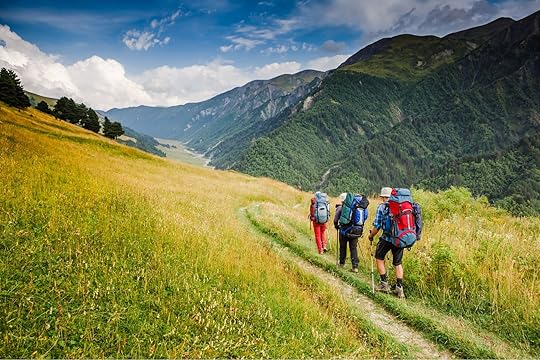
Admit it — you feel a serious spike in stoke level when you buy a new piece of backpacking gear. It could be a small item, like a sleeping bag liner or a merino T-shirt, or a bigger one, like a tent or backpack, that completely revolutionizes your backpacking experience. There’s something satisfying about building out your gear setup and options, and having the right items makes it easier to execute and feel comfortable on bigger and better trips.
Backpacking or distance-hiking equipment usually makes a great gift for the outdoorsy people in your life as it’s always fun to try out near gear and supplies on the trail. The right gear can be the difference between a good outdoor experience and a downright risky one. Here’s all the summer backpacking gear you need to ensure you’re properly prepared for your upcoming — and no doubt epic — night spent under the stars.
Big-ticket itemsInside your packBackpacking clothes and small itemsWe hope you love the summer backpacking gear we recommend! Just so you know, Matador may collect a small commission from the links on this page if you decide to book a stay. Listed prices are accurate as of the time of publication.
Getting prepared for summerWhile backpacking is the ultimate adventure during long summer days, optimizing the trip takes a decent amount of advanced planning — and the right gear. Being unprepared is the fastest way to ruin the journey for yourself and everyone in your group. You’ll need to carry far more gear than you’d pack for a day hike, including multiple layers of clothing, camping supplies, and food and cooking supplies. But if you’ve never gone backpacking before and agreed to join your buddies without knowing what you were getting into, never fear: we’ve compiled the ultimate summer backpacking gear guide for beginners.
When planning your trip, note that every route is different in different ways. On guided treks, the host company should offer a list of the required gear, along with some additional comfort items or specialty gear they’d recommend. And usually, “trekking” means sleeping in huts or semi-permanent shelters, whereas backpacking is entirely self-sufficient and in nature (and hence requires a bit more gear). Trekking companies may even rent out certain items that are tough to travel with, such as sleeping bags or backpacks with frames. On unguided hikes — a.k.a backpacking — it’s up to you to know what you need. That said, in Europe and other parts of the world, it’s common to refer to both hiking and backpacking as trekking. So they’re sort of interchangeable.
Fortunately, the list below has the basics, no matter what trip you’re taking. You can buy everything below at the links provided or potentially your favorite local outdoor store.
The basicsBackpacking pack
Photo: Suzie Dundas
Cost: $150-$300
If you’re spending at least one night in the woods, you need to have a comfortable, oversized pack to carry your sleeping gear, food, and everything else coming with you. Get a rugged pack built for the backcountry, and you’ll want one that’s at least 45 liters for a single-night trip, but an expandable one is even better. For multi-day trips, a 55-70 liter pack such as the Osprey Atmos AG 65 will do you right. Osprey is a very popular brand with a fantastic reputation in the outdoor world.
Make sure your pack includes a reservoir for a water bladder, such as a CamelBak (see below). If you do buy a pack online, we recommend buying it from a retailer with a physical location you can visit to have it properly adjusted to your body. At REI stores, you can usually put sandbags in a demo and walk around the store with it to test out how it feels on your back and hips when full.
Packs come in men’s and women’s versions. Generally, women’s versions will have a shorter torso and more narrow shoulder straps, plus a more padded hip belt to account for larger hipbones. But if you’re a guy with narrow shoulders or a woman with a tall torso, by all means, buy whatever bag you prefer. Our outdoor editor has and loves the Sierra Designs Blaze 60, with giant side pockets and a lid that converts into a day pack. It also comes in a men’s version at the same price ($269).
Tent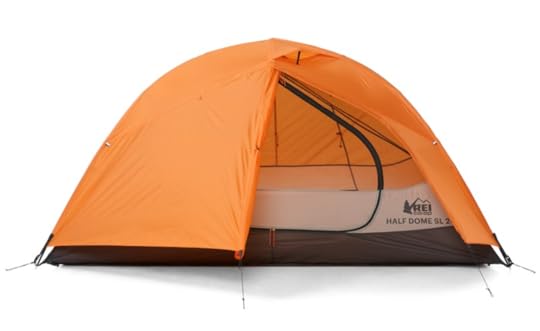
Photo: REI
Cost: $217-$279
If you’re not staying in guest houses, a good tent with a rainfly is mandatory. A one or two-person tent is the best option, as it’s small enough to clip to the outside of your backpack and easy to set up. The REI Half-Dome 2 makes for a great trekking tent for solo trekkers or couples — or friends who don’t mind sharing a tent, as it’s spacious enough. It’s made for the elements and can handle rain, sleet, or wind, and won’t weigh down your pack too much since the total weight is under four pounds.
For a family, we recommend a larger option, such as the Mountainsmith Upland 6. It’s designed for six but more comfortable if you make it at five plus gear, in case it rains and you need to move stuff into the tent. Before heading out, double-check to make sure you have the required stakes and poles. Wrap the tent around them when you put it away it morning as you break down camp.
Sleeping bag
Photo: REI
Cost: $279-$299
Few things are more frustrating than not getting a decent night’s sleep when you’ve got a bit day of hiking coming up — but a good sleeping bag makes all the difference. The first step for buying a bag is to check the temperature rating, which is typically on both the bag and the packaging, plus the actual tag. Be sure you’re bringing a sleeping bag appropriate for summer and the weather expected on the trip (90 degrees during the day doesn’t mean 90 degrees at night). We love the Big Agnes Sidewinder SL, available in men’s and women’s, for its comfort and easy packability and because it meets each of the following recommendations:
20-degree temp rating: A solid three-season bag will do the trick for most adventures.Compatible with a sleeping bag liner: A sleeping bag liner can add an extra 10 degrees to a sleeping bag’s rating.Down insulation: It’s the lightest and most efficient insulation. If you have the choice between this and polyester, go with down.It’s water-resistant: Splurge for a water-resistant sleeping bag. You don’t want to wake up in the middle of the night with a soaking wet back if water gets into the tentWhen it comes to sleeping bag shape, you have three options: mummy, semi-rectangular, or rectangular. This is personal preference as much as anything else. Mummy bags are tight and warm, but don’t allow much wiggle room. Rectangular bags are more versatile for those who have a tough time sleeping in a still position. If you’re not sure, a semi-rectangular shape like this one is a happy medium. It allows for side sleeping while still being snugger (and therefore warmer) on your feet. Depending on where you’re camping, your summer backpacking gear will probably weigh a little less than in fall or early spring since you won’t need as much clothing — but you’ll still want to carry a warm bag.
Inside the packA well-prepared trekker or backpacker researches the trip, reads online forums and comments, and takes note of what gear previous hikers recommend. In your research, you’ll likely find comments along the lines of, “I wish we’d brought this” or “I was so glad I had enough of that.” Look for patterns – when multiple people discuss the same item, it’s a pretty good sign that you should have it with you. Here’s some of our go-to specialty gear.
Gas Camp Stove
Photo: REI
Cost: $109.95
Jetboil’s burner connects easily to any 3.5-ounce fuel tank and allows you to heat food over an open flame in the middle of nowhere. It’s guaranteed to work in temperatures down to 20 degrees Fahrenheit, so you can have a warm meal and hot coffee (or a hot toddy) even if it gets unexpectedly chilly.
Water purifier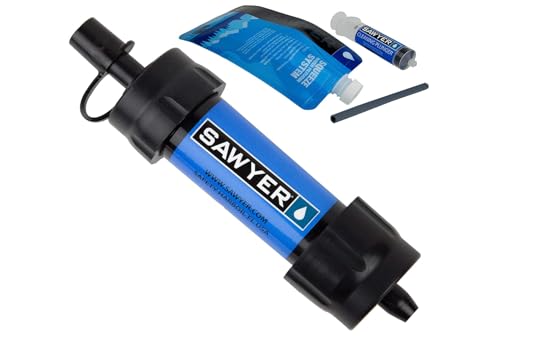
Photo: REI
Cost: $25
Grab a Sawyer Mini Water Filter for your hike and you’ll be able to drink freshwater streams, lakes, and pretty much anywhere that doesn’t have farm runoff. Having an actual filter system is preferable to simpler tools like filtration straws, which don’t do as good of a job at removing toxins and bacteria (though they’re better than nothing). Of course, always take caution in drinking water from the source, and never drink still water.
Waterproof matches
Photo: REI
Cost: $10
For use in getting a fire going, among…other things. UCO’s Titan stormproof matches will come in handy more often than you’d expect.
Building your outdoor gear setup? Check out Matador’s guides to everything you need to thrive outside:The perfect backpack for every type of traveler, from hostelers to hikers10 must-haves for the traveling yogiWhat to pack for an epic trekking adventure in Latin AmericaAll the fall camping gear you need to have an epic tripAll the outdoor gear you need to keep moving on the trail this springHeadlamp

Photo: REI
Cost: $39.95
Illuminate the night with a headlamp from Black Diamond. Whether you’re reading a book in the tent, checking your route map for tomorrow, or getting up before dawn to make a summit bid, a headlamp is just as useful inside the tent as it is outside.
Hatchet
Photo: Hults Bruk
Cost: $139
If you don’t mind the extra weight, some people like having a hatchet if they’re spending the night in the woods. Of course, you may not need it in areas where campfires are illegal, like they are in much of the US West. But if you do carry it, it’ll come in handy for chopping kindling or, potentially, bushwhacking your way through thick patches of overgrowth. And in a pinch, it’s self-defense. The Almike from Hults Bruk is the best option because it’s small enough to fit in your pack or strap onto the side. The Swedish brand has been making axes since 1697 and they’re among the most durable you’ll find.
Compass with clinometer
Photo: REI
Cost: $15.99
A reliable compass is a great hiking companion. This one from Mountain Summit Gear comes with a clinometer, used to measure the degree of slope, in case your crew gets into a heated discussion about how steep the forthcoming trail or summit push is. And yes, you do have a compass on your phone — but what happens when your phone dies? Exactly.
Topographical map and trail map
Photo: Daxio Productions/Shutterstock
Cost: Varies
A topographical map shows altitude gain and loss along with detailed terrain features over a specific area. They can be tough to read at first, but once you get the hang of it, you’ll never want to head into the mountains without one again. A trail map of the area where you’re heading is also mandatory — don’t count on Google to save you. You can usually pick one up at an outdoor store near wherever you’re backpacking. They’re an essential piece of summer backpacking gear, however, so take the extra 10 minutes to duck into a shop or visitors center to see if they have one.
Heavy-duty knife
Photo: REI
Cost: $64.95
It’s incredible how often a good knife comes in handy in the wilderness for everything from cooking to building a fire to making repairs. If you’ve got a Swiss Army Knife, bring it. If not, this Gerber Principled Fix Blade Knife will do the trick.
Alternatively, you could carry a multi-tool, with everything from a knife to ferro rod (for starting fires). Leatherman multi-tools are a bit pricey, but they’re very high-quality — you’ll be able to pass them on to your grandkids. We think the pop of color on the Leatherman Signals Colors Multi-Tool ($129.95) helps make us a little less likely to leave it sitting in the dirt when we pack up and move to our next site.
First-aid and safety supplies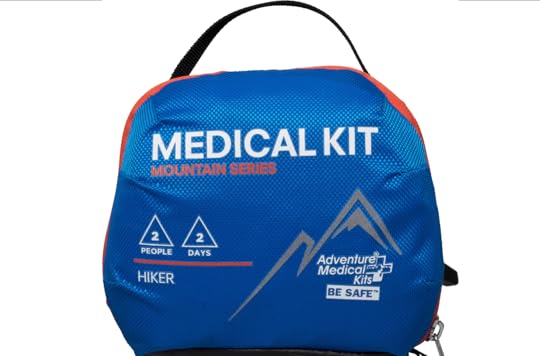
Photo: REI
Cost: $25
It’s always worth making room in your pack for a small first aid kit. Adventure Medical Kits come with everything you’ll need to treat a minor inconvenience as well as a quick guide to tips and tricks for field use. Use it not just as part of your summer backpacking gear collection, but also for backcountry ski days, day hikes, or even road trips.
Hat, sunglasses, and sunscreen
Photo: Blazej Lyjak/Shutterstock
Cost: Varies
The air is thinner and the sun is closer at high altitudes. Always have sun protection on hand. Sunscreen or sun-protective clothing and hats should be a non-negotiable piece of your summer backpacking gear setup.
NEMO Switchback Sleeping Pad
Photo: REI
Cost: $39-$50
No one wants to sleep with a rock jabbing into their back. That’s where a NEMO Switchback sleeping pad comes in. It folds up and straps to the side of your pack when not in use. This portable “mattress” makes sleeping in the wilderness much more bearable and weighs next to nothing. The ground is usually pretty cold at night and you’ll appreciate having a bit of insulation below you, even if your sleeping bag is thick and warm.
Bivy sack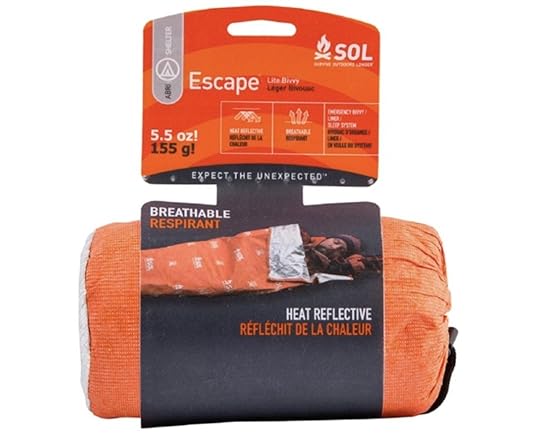
Photo: REI
Cost: $40-$179
A bivy is a lifesaver when you’re far from your campsite when a storm rolls in. It’s essentially a makeshift sleeping bag that retains your body heat and protects you from the elements overnight. You can go fancy and opt for the tent-sleeping bag hybrid Helium Bivy from Outdoor Research, but if you already have a tent setup with you, a basic emergency bivy like the Escape Lite from Sol will do just fine. For most summer backpacking gear kits, a lightweight one should be fine.
Paracord (or utility cord)
Photo: REI
Cost: $5 (ish)
Even if you aren’t a climber, it helps to know a few knots in the backcountry — especially knots for securely hanging your bag from a tree or pole in bear country. Most backpackers carry paracord, also known as utility cord, also known as parachute cord, which is an ultralight, ultra-strong, and waterproof plastic cord. While hanging your food may be the primary purpose, it could come in handy for any number of things, like creating an emergency stint or evacuation sled or raising and lowering gear across cliffs. Beyond emergency situations, having some rope around is never a bad idea, anyway. And there’s no need to buy the super-expensive kind. Just buy it in bulk (40 feet or so should do for tying and hanging food over bear poles) or buy a roll of utility cord online.
Water bladder
Photo: Camelbak
Cost: $20-$35
The easiest way to cart and drink water is with a CamelBak bladder. They fill easily from a faucet or from your water purifier and allow you to drink water as needed without having to stop and unzip your pack or reach around for a water bottle each time. Almost all backpacks will have a clip for the tube so it doesn’t dangle when you’re walking.
Handheld GPS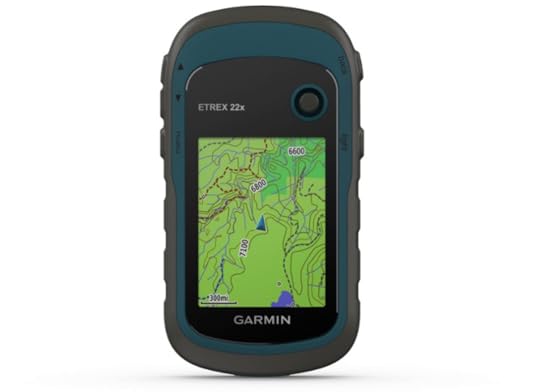
Photo: REI
Cost: $200
Without cell phone service, a handheld GPS unit like this one from Garmin is the best way to find yourself if you lose the trail or need any directional assistance. If on a guided trek, or with someone who has one, you don’t necessarily need your own. But if you plan to make backpacking or trekking a regular activity, this is a good item to have on your list. It’s one of those pieces of summer backpacking gear (or any season, really) that you hope to always have and never need.
Trekking poles
Photo: Black Diamond
Cost: $99-$150
They look an awful lot like ski poles, but they have a pointed bottom, rather than buckets, and strap to the side of your pack when not in use (that’s what the little loop near the bottom of your pack is for).
Trekking poles, also known as hiking poles, are the modern version of a hiking stick and particularly useful when heading down the mountain as they absorb some of the shock and pressure put on your knees with each step — though they also make a big difference on uphills, especially since you’ll probably be carrying an extra 30 or so pounds in your pack. Trekking poles are also great for balance at any point during the hike.
Black Diamond offers a collection of great options starting at $99. Most people don’t need any fancy features, though you should spring for some with an adjustable length.
Edibles
Photo: Rawpixel.com/Shutterstock
Cost: Varies
No, we don’t mean the fun kind. Basics like granola bars and apples are cheap and easy to eat on the go. Bring them, along with protein and foods heavy in calories — they’re an essential boost on multi-day treks. Here are some ideas to get you started.
Peanut butter is a cheap, easy-to-pack, and filling protein. Plus, it’s high in calories — a must for trekking.Trail mix earned its name for a reason — it’s a great energy boost and easy to carry.Nuts. And more nuts. Protein. Calories. Protein. Calories.Patagonia Provisions campfire meals. Patagonia offers a range of easy-to-prep hot meals designed for cooking and consumption in the wilderness. They’re delicious, full of protein, and come in small packages which fit easily into your pack. If you’re a vegetarian, Backpacker’s Pantry has a wide section of good options; our outdoor editor says the pad thai is the best.Red beans and rice is a classic campfire meal. Quick, easy, and filling, this meal provides both protein and carbs to get you powered up for the next day.Tortillas are great for backpacks as they’re much less likely than bread to get smushed. They can be packed compactly in your backpack — just don’t fold them.ClothesWater-resistant shell jacket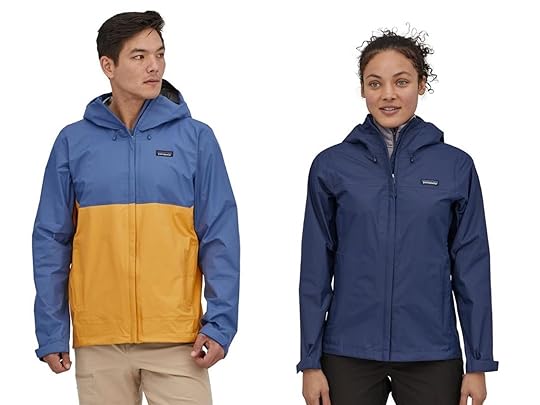
Photo: REI
Cost: $100-$150
When selecting your outer layers, think waterproof and wind resistant. Comfort is also a factor, particularly with boots.
In the high country, weather can turn on a dime, turning a beautiful morning into a drizzly afternoon in what seems like an instant. You’ll be miserable (and soaking wet) if you’re hiking in a sweatshirt. Get yourself a water-repellant shell layer to throw on over your base layer. Patagonia’s Torrentshell is appropriate for most summer backcountry situations.
Hiking boots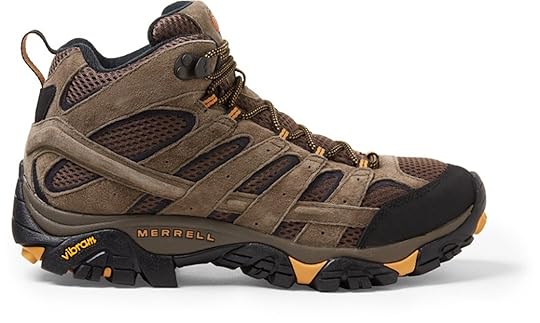
Photo: Merrell
Cost: $100-$150
This is probably the most important summer backpacking gear purchase to make in-store versus online. When buying hiking boots, look for two things: comfort and support (ankle coverage is a must). Read some reviews before making a purchase, because often the best hiking boots are super stiff when you try them on. Boots tend to get more comfortable as you break them in, and over time will conform to your feet. Merrell makes great trail boots. Invest in a quality pair and they’ll reward you with years of heavy use. If you’ve procrastinated and you don’t have time to break a sturdy pair in, opt for a lighter shoe with more flexibility.
While you certainly can go backpacking in a pair of trail shoes, hiking boots are a better option for when you’re carrying the extra weight of a pack. Your feet will thank you.
Trekking pants
Photo: Outdoor Research
Cost: $60-$130
Depending on altitude, season, and location, pants may be a better option than shorts. That’s partly for the protection they offer from wind and water, and partly because long pants protect your legs from branches and plants. You want something that won’t tear and is wind resistant, flexible, lightweight, and comfortable. The Cirque II Pants from Outdoor Research are a great option for men. PrAna makes a great pair for women, with options in multiple colors.
Base layersWhen selecting base layers, think comfort, flexibility, and thickness. Base layer items are generally divided into three categories: lightweight, midweight, and heavyweight. Midweight is a general best practice for beginners and three-season trekking, particularly if you plan to head above treeline where wind can be quite ferocious. In general, the thicker the layer, the better it protects against cold. If you’re in a place where the temperatures can drop by 50 degrees or more at night, like the Sierra Nevada, you’ll likely want to sleep in your thermals.
Thermal underwear
Photo: Voyagerix/Shutterstock
Cost: $10-$50
Thermal underwear wicks moisture and sweat and provides warmth for cold nights and inclement weather. The two most common materials are polyester and Merino wool. Avoid silk underwear as it’s not odor resistant and doesn’t wick moisture as well. Lightweight options are good for chilly days under your hiking pants. REI offers options for both men and women.
Shop women’s thermal underwear
Base layer top
Photo: REI
A thin and soft Merino wool top such as this one from SmartWool is perfect for wearing underneath your jacket or t-shirt. They pull sweat off your skin, provide light protection against wind, and are super flexible and comfortable. You’ll need at least two under layers under your shell when it gets cold and a base layer top should be one of them. A comfortable fleece, like this one from Patagonia, works well as your midlayer. Base layers usually come in long-sleeve and short-sleeve options.
Hiking socks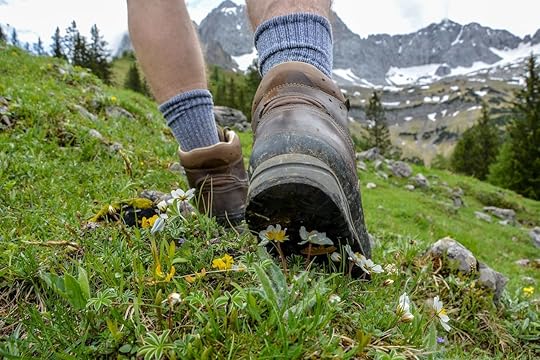
Photo: Asvolas/Shutterstock
Cost: $12-$20
SmartWool makes both men’s and women’s Merino wool socks designed specifically for trail use. There are plenty of other options, but keep in mind that you’ll be wearing hiking boots and need socks that rise up to near or slightly above the top of the boot to prevent rubbing. Socks may not seem like the most important piece of your summer backpacking gear set-up, but you’ll begin to realize how much they matter if you get to camp and realize you have sweaty and blistered feet.
Comfortable campsite clothes and shoes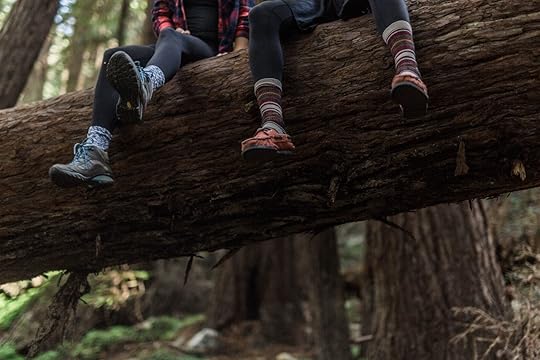
Photo: Nathan Dumlao
Cost: Varies
A pair of gym shorts or yoga pants will do the trick for relaxing post-hike and wearing to sleep, unless it’s quite cold (in which case, sleep in those base layers). Taking off your hiking boots at the end of a long day is among the most satisfying experiences involved in backpacking, and you want something comfortable to change into at the campsite or guest house.
You’ll also want a pair of lightweight shoes to wear around the campsite so you don’t have to live in those heavy boots. A good pair of slippers — designed for outdoor use — will do. We love the REI Co-Op Camp Dreamer Slip-Ons, and it seems like every other person living in a mountain town has a pair of the cozy Teva Moc Embers. They come in men’s and women’s versions, but they’re basically unisex. 
Cost: $59.95
5 Iconic New York City Sandwiches Every Visitor To the City Needs To Try
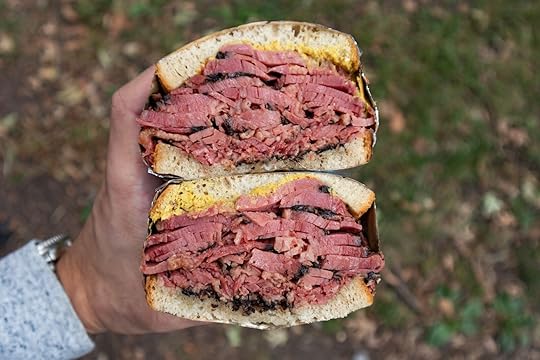
Twitter regularly erupts into debates between New Yorkers and everyone else about whether bodegas (alternatively known as delis, corner stores, or convenience stores) are special or not. However, there are those of us who forgo the conflict entirely. Instead, we enlightened few chose to lovingly consume and appreciate these local spots where regulars are beloved and that seem to stock anything anyone could ever desire, from Twinkies to rolling papers. Our mouths are full and our souls are sated. New Yorkers feel such a profound emotional bond with bodegas for one very important reason: The New York City sandwiches they sell are among the best in the country.
Raised in New York City, I’ve been a deli customer my entire life. I’ve split every type of bodega into my own personal categories: The crunchy organic type that often comes with a juice bar, the type that keeps queso fresco next to the eggs and milk, the type owned and operated by the same family — the list goes on. All these seemingly disparate establishments share in at least one thing: They all sling sandwiches at any hour of the day.

Photo: duckeesue/Shutterstock
The ubiquitous availability of hot, cheap food whenever the mood strikes is, in my humble opinion, one of the main reasons people love New York City. You’re welcome to order from a pre-set (usually by Boar’s Head) menu, or make it up as you go along — a process which has, over time, led to the emergence of certain New York City sandwiches like the legendary chopped cheese or a BEC-SPK (bacon, egg, and cheese; salt, pepper, ketchup).
Choosing iconic New York City sandwiches for every borough is a tremendous, perhaps impossible, task. After all, the question is so personal. Everyone has their favorites, the delis they swear by, and the grill-masters they trust. But I wanted to try to determine the New York City sandwiches that everyone needs to try – from the local exploring Queens to the out-of-towner stepping into Manhattan for the first time.
Not everyone will agree that every establishment listed here should be called a bodega, but in my mind what makes a bodega is the immediate availability of cheap and hot food. As a result, some of my additions may be contentious, but what is a bodega sandwich ranking without the risk of inviting polemic? That being said, here are my picks for one sandwich everyone needs to try in each borough of New York City.
Manhattan: Pastrami on rye
Photo: Brannon_Naito/Shutterstock
It might seem easy to tell unwitting tourists to head to Katz’s for its overpriced pastrami, but I like a challenge. As an uptown girl, it’s only right that I direct you north of 14th street. The heyday of the pastrami sandwich should really be credited to Upper Manhattan, anyway, though Upper Manhattan’s pastrami credit took a hit for a time after the closure of Upper West Side favorite Artie’s. Since then, there’s been a gaping hole where there once was a reliable pastrami spot — until us New Yorkers realized there was great pastrami under our noses the whole time. The spot is called Tal Bagels on Broadway, and it not only offers stupendous smoked fish and sumptuously plump bagels, but it’s also the home of some wonderful pastrami. Have it on a bagel or have it on rye, they’ll slice it exactly how you want it (and that’s what really matters when it comes to pastrami).
Where: 2446 Broadway, New York, NY 10024
Bronx: Turkey paniniThis may seem like an unusual choice, but bear with me: Because plenty of South Bronx locals could regale you with recommendations of all the best Spanish delis south of the Tremont Avenue D stop, I won’t pretend to offer you a better suggestion than they can. I am better acquainted with the North Bronx, at the very end of the 1 line. I spent my high school career in the Bronx in close proximity to Yonkers. Thankfully, I was never without a solid deli sandwich. At my school, those privileged enough to have friends with cars would eat their lunch at Tierney’s, a teeny-tiny deli nestled at the bottom of a tree-lined hill in Riverdale. Their fresh turkey panini was a crowd-pleasing favorite, offering us the much-needed comfort of Thanksgiving in the sweltering May heat of finals week. Getting that far north is a trek, but it’s a trek worth taking (if only for the opportunity to walk off your Tierney’s sandwich in Van Cortlandt Park).
Where: 5780 Mosholu Ave, Bronx, NY 10471e
Staten Island: Roast beef sandwichAlthough I haven’t actually departed the Staten Island Ferry at Staten Island, that doesn’t mean I don’t know exactly where I’ll go when I do. John’s Famous Deli comes highly recommended by every Staten Islander I’ve ever met, and with good reason. This place is so famous that it’s got famous in the name, and judging by the sheer number of times it’s been mentioned to me, it’s earned the title. The crown jewel is a glistening, juicy roast beef sandwich with onions, fresh mozzarella, and gravy. Other sandwiches like the shrimp parmesan also come highly recommended, but with a fervent reminder that before all else one must try the roast beef sandwich.
Where: 15 Innis St, Staten Island, NY 10302
Brooklyn: Shawarma sandwich
Photo: rusty426/Shutterstock
I have noticed since moving to a Brooklyn-adjacent part of Queens that some of the most delicious items on any bodega menu are halal. My usual place is run by Yemeni guys, and they sometimes — generally in the late-night hours — include homemade zhoug in their chicken over rice (but only if you’re a regular, it seems). An equally delightful shawarma sandwich (sometimes stuffed with fries) that I promise is just as good comes from Irving Gourmet Deli (also known as Bushwick Gourmet). This deli offers an incredible shawarma wrap that rivals those $12 monstrosities you might find at a more elegant establishment like Pita Gyro Grill, which is delicious but maybe not the most wallet-friendly shawarma option.
Where: 350 Irving Ave, Bushwick NY 11237
Queens: Chicken parmesanI would be lying if I said I could pin down just one sandwich that can represent the many facets of Queens. I can, however, at least admit that my personal favorite sandwich from Queens is the chicken parm. And I can tell you that one of the best chicken parmesans to be had in Queens is at Sorriso Italian Pork Store in Astoria. Sorriso means smile, and believe me when I say this chicken parmesan hero will put a smile on your face.
Where: 4416 30th Ave, Queens, NY 11103 
What It’s Really Like To Live as an Expat in Berlin, Germany

Being an expat in Germany comes with a high standard of living and easy access to many neighboring European countries. The robust economy, lively and affordable cities, and stunning rural countryside have attracted expats from around the world.
Berlin in particular is a popular base. Around one-third of the Belin’s residents are from overseas, and many expats add to this multicultural population. The city is an enriched cultural hub and has attracted creatives and entrepreneurs who take inspiration from the magnificent architecture and artistic offerings.
Although Germany has the reputation for being one of the most organized countries in Europe, uprooting and moving to a new country is always a daunting process. Here, we talk with Yoland Evans, a freelance journalist who is originally from Missouri and has also lived in New Orleans and Los Angeles, as well as spent a lot of time traveling abroad. Evans left the United States in 2014, and has been living overseas ever since — including, as of 2021, Berlin.
This interview has been edited for length and clarity.
The visa processAccomodation and setting up homeFinance and job opportuntiesHealthcareThe society in BerlinLife in Berlin compared to the USSafetyGeneral adviceWhat made you consider moving to Berlin?
Photo: PHOTOCREO Michal Bednarek/Shutterstock
I originally came here in April 2019, but amid applying for my visa I left to do research for an article in Romania. Then the pandemic happened, and all the countries shut their borders to US citizens. I ended up staying in Sighisoara, Romania, and waited it out. It was not until October 2021 that I finally made it back to Berlin.
I moved here because I needed a visa so that I could live in Europe. Also, Berlin is a great home base for me to travel to see friends in the UK and Ireland as well as explore neighboring countries.
Logistics and practicalities of movingWhat visa did you have to apply for?I applied for a freelance visa as an artist.
What are the visa requirements for an expat in Germany and how was the process?The requirements you need to apply for your visa are pretty simple.
First, you have to be a resident of Berlin, or wherever you are. For that, you need an apartment, which can be hard to find when you first arrive. You need evidence that you have money in your bank account and jobs lined up so you are not a burden on the government. A letter of intent from a German company stating that they plan on hiring you is also required. These letters are key to getting more than a one-year visa. Anyone arriving in Germany also needs to sign up for mandatory medical insurance.
It’s a lot of paperwork to bring for your visa appointment. One of the hardest things is actually securing that appointment, especially if you are doing it last minute or before your 90 days tourist visa is up. I booked mine three months ahead when I was still in The States.
Do you have any general advice for anyone regarding visas?I would say once you talk to your immigration agent, it’s not as stressful as you might think, as long as you have your paperwork in order.
Everyone has a unique experience when they go to immigration, so just focus on being organized and it should go smoothly. Also, don’t pay anyone to help you as there are loads of expat advice groups on Facebook.
What are the best neighborhoods in Berlin for expats to live?
Photo: Pani Garmyder/Shutterstock
This is a hard question as it all depends on where you want to be and what type of life you want in Berlin. Most people look to neighborhoods such as Neukölln, Kreuzberg, and Friedrichshain, so they can be in the mix.
What is the standard of housing like in Berlin?It’s time-consuming to find an apartment because everyone is looking, and Germans want to rent to people who will stay long term. Also, young people rarely buy and will rent forever as apartments are a huge financial investment.
I kind of lucked into every flat I ever lived in, as it took me only two weeks. Honestly, everyone is trying to find that magical unicorn of an apartment that has a 30-year or unlimited lease for less than $600. But these are scarce unless someone you know leaves the rental and passes it on to you.
I rented a furnished place from Wunderflat for two months so I could register as a resident. The rent was a little higher than I wanted to pay ($1500), but I was in a time crunch as my visa appointment was in mid-November and I arrived in October. I recommend that you wait until you get in the country as scams are common.
How easily did you find setting up a bank account?You cannot open a bank account with many German banks without your landlord’s confirmation of residence and registration as a resident of Berlin. I signed up for N26, an online bank, and it was really easy.
What level of salary do you need to live in Berlin?It depends on your lifestyle as pay can be average and you have rent, high taxes, and expensive health insurance. About $3000 a month will let you lead a very comfortable lifestyle in Berlin. My income is pretty good because I mostly work for US publications. I usually make between $1500 — $2500 a month, but I also have a little savings and I’m fantastic at budgeting.
What is the economic climate like in Berlin? Are there plenty of work opportunities?Depending on your profession salaries can be low, many jobs require you to speak some German, and competition is high. It can take people months to find a decent job, which is hard if you’ve just moved to the city. I work for myself, so I don’t have to worry about that aspect, but it took a friend of mine a year and a half to find her current job.
What is the cost of living in Berlin compared to the US?
Photo: Stephanie Braconnier/Shutterstock
I think Berlin is cheaper than most cities, but people who lived here for years believe that prices have gone up and Berlin is more expensive.
I can’t really compare it to the US as I haven’t lived there for many years, but when I was living in a small town in Ireland, my budget was about $500 a month, including rent. My budget for Berlin is about $1500 a month including rent, insurance, bills, food, and miscellaneous expenses. I have not been out as much because of the pandemic, so this has helped me to save for bigger things like travel.
Does Germany have free healthcare? And how would you rate it?Healthcare in Germany is definitely cheaper, but it does not cover preventative healthcare such as annual check-ups. You have to pay extra for those. It also takes ages to get appointments and you can’t see a specialist without a recommendation from your doctor. Doctors are very holistic, they will prescribe you anything from tea and ibuprofen.
Berlin society
Photo: hanohiki/Shutterstock
What do you enjoy most about living in Berlin?I like the community I formed with my friends and the history, but it’s for sure lacking some culture and diversity that I’m used to in the US. I love the cheap beer, but Berlin is really no different from any other city I lived in.
What do you miss from home?I miss the tasty food because it can be bland here. They have all this seasoning and don’t use any of it on the food. And my family and friendships. I spent more than half my life living abroad, so I miss them a little.
What are the biggest safety concerns facing expats in Germany?As a Black female, I’ve faced racism and gaslighting. I have found when I call people out on it, they become very xenophobic. I’ve been told I should leave if I don’t like it. It’s also hard to get a flat if you’re Black and I’ve been followed in stores too.
I have met some nice people here. But, I’ve found Germans are hard to get to know, as they want you to do a grand gesture to win their friendship.
Is there any general advice you can offer?I tell people to visit the city, do research before deciding to move, and don’t take one person’s opinion on what life in the city is like. 
May 5, 2022
These Gorgeous Mauritius Beaches Will Make You Forget About the Extra-Long Flight
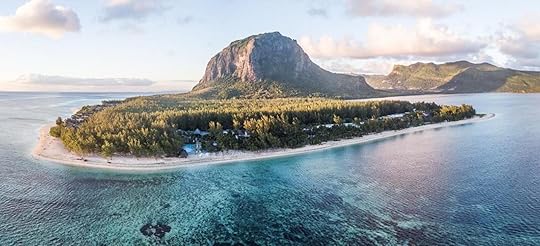
Ask anyone on the Mauritian shore what their favorite beach on the island is, and chances are they’ll reply “you’re standing on it.” And that’s totally understandable. It’s not easy to choose among the fabulous Mauritius beaches when each coast boasts bright turquoise water and long sandy stretches that have earned the island accolades as a top honeymoon spot from publications like Brides Magazine.
Why go to Mauritius vs. Maldives or Seychelles?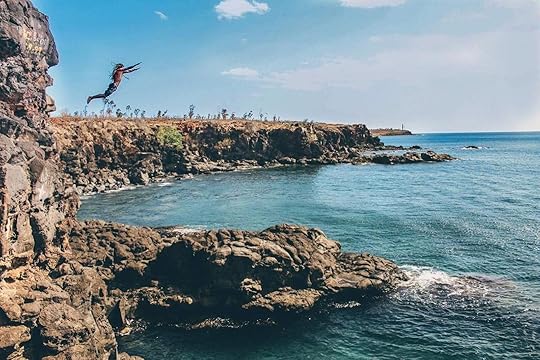
Photo: My Mauritius Travel
Beyond its beguiling beaches sprinkled with black lava rocks, Mauritius has a lot more for independent travelers than other contenders in the Indian Ocean like Seychelles and Maldives. And those extra attractions make it worth the extra effort to get there.
While going to Mauritius probably won’t add any extra flights for travelers from the US, it will add extra flight time. It’s a four-hour flight from Johannesburg, South Africa; six from Mumbai, India; nearly seven from Dubai, United Arab Emirates; and at least 11 hours from cities in Europe like Madrid, Paris, and London (though they’re all direct flights).
So why go the extra mile? Many people go to Mauritius for its remarkable cultural landscape – something that caught writer Mark Twain’s attention in 1896. Having nearly completed his circumnavigation of the globe along the equator, he wrote: “Went ashore … at Port Louis, a little town, but with the largest variety of nationalities and complexions we have encountered yet.” (By the way: he also head Heaven must have been copied after Mauritius.)
More than a century after his writing, people from different ethnic groups (Indo-Mauritians, Mauritian Creoles, Sino-Mauritians, Franco-Mauritians) and religions (Hinduism, Islam, Buddhism, Christianity) still co-exist on the island, creating a welcoming and tourist-friendly culture.

Photo: My Mauritius Travel
The country’s restaurants also reflect that same multiculturalism and Mauritian cuisine meshes French, Chinese, Indian, and African influences. In practice, this means that you can have perfectly flaky French croissants, Asian-inspired bol renversé, and Mauritian biryani all in one day. And gateaux piments (chili cakes) are a great snack any time of day.
Finally, of course, there are the Mauritius beaches, the stunning natural landscapes, and the healthy reefs of the underwater world. You can hike to waterfalls and volcanic landscapes, scuba dive and snorkel on colorful reefs, spot dolphins on a catamaran tour, or take a day trip to one of many remote Mauritius beaches.
But if you can’t afford a private day tour to a beach (though they may cost less than you think), don’t worry. The top Mauritius beaches on each coast are accessible and open to the public. And considering how few tourists make the extra effort to reach the country, you may find you have the whole beach almost to yourself, anyway. And these are the best.
We hope you love the spaces and stays recommended below. Just so you know, Matador may collect a small commission from the links on this page if you decide to book a stay. We never let hotels pay to influence our recommendations.
Best eastern coast beach: Belle Mare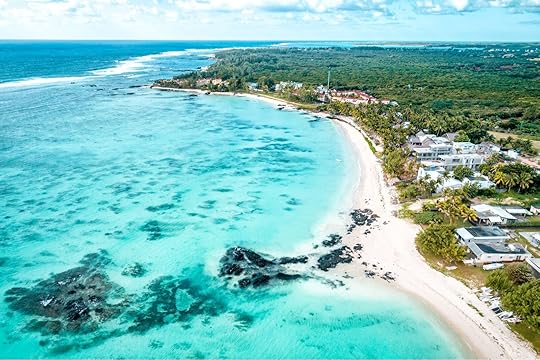
Photo: Ajan Alen/Shutterstock
This is the island’s longest beach and has a beautiful sea, as the name belies to French speakers. But to describe the ocean just as “beautiful” is truly an understatement.
It’s shimmery, warm, and has more fish than you’ve likely ever seen while snorkeling off the shore. And as the icing on the cake, there’s a breezy park lined with native Casuarina trees next to the beach. It would be the perfect place for a picnic in the shade, especially if you had the foresight to pick up a bottle or two of duty-free wine at the airport.
The eastern Mauritius beaches and towns are still relatively uncrowded, but in the Belle Mare area, you’ll find a row of beachfront resorts and villas. Constance Prince Maurice is a five-star hotel on the beach, and if you go inland a bit, you’ll find the much more affordable 15-bedroom Horisun, which distinguishes itself with an indoor/outdoor sunken tub in all rooms. There are a couple of no-frills restaurants nearby, and it’s a short walk to the beach and the nearby lagoon (ideal for snorkeling).

Photo: Booking.com/Bubble Lodge
Another great place to snorkel on the eastern shore are the Blue Bay Lagoon and Île aux Cerfs (Deer Island, though there are no deer these days). It’s a 15-minute speedboat ride from the Pointe Maurice Jetty; boats leave every 30 minutes. You’ll have your choice of water sports on the island, but the only lodging option is the eco-friendly Bubble Lodge. Fortunately, it’s pretty darn awesome. Who doesn’t want to sleep under the stars?
Best northern coast beach: Mont Choisy
Photo: Quality Master/Shutterstock
Next is the north. Forget chaotic Grand Baie and head instead to chic Pointe aux Canonniers, where you can soak up the sun at Mont Choisy Beach. It’s one of the wider Mauritius beaches, with sugar-fine, soft sand. And the always-calm water is perfect for swimming.
The exclusive and luxurious – but also quite pricey – 20 Degrées Sud is around Pointe aux Canonniers, but so are more affordable boutique hotels with chill-out remixes on repeat, like Esprit Libre.
The best scuba diving in the country is in the north, which explains the high concentration of dive shops in the area. You can dive year-round on the island, but not all sites are always accessible or visible. However, the northern reefs offer the closest thing to optimal year-round conditions in terms of both accessibility and visibility. Whether you’re a curious beginner or an open water certified diver, coral-encrusted wrecks, Gorgonian sea fans, multicolored tropical fish, and rare macro life await under the surface. Some of the most famous sites are Coin de Mire Island, Round Island, and Snake Island.
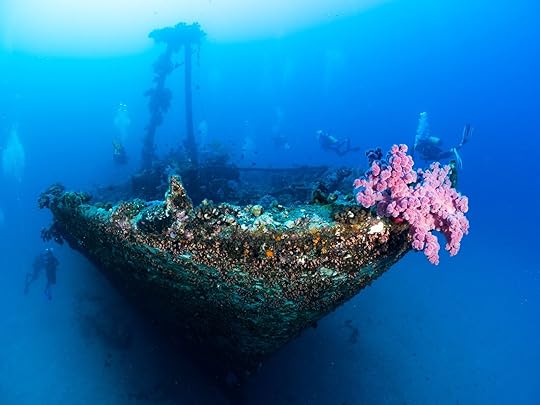
Photo: Chris van der Voet/Shutterstock
While visiting Mont Choisy, try to find some extra time to explore the northwest coast. Cap Malheureux is a pretty little beach town north of Mont Choisy, and the Balaclava-Turtle Bay marine park to the south is a fabulous bay ideal for snorkeling since it’s protected from wind. Oh, and it has tons of sea turtles. Just be sure to give them lots of space if they swim by while you’re in the water.
If you go by the capital city, Port Louis, it’s worth stopping for a few hours. The Natural History Museum has a fascinating exhibit on the dodo bird, which serves as the country’s emblem on the coat of arms. Bistro serves exquisite French food, and CocoChill has not just a swim-up bar but tables actually in the pool.
Spoiler alert: you might notice by now that many restaurants in Mauritius have their menu handwritten on blackboards, which staff carry between tables as most menus change daily.
Best western Mauritius beach: Flic en Flac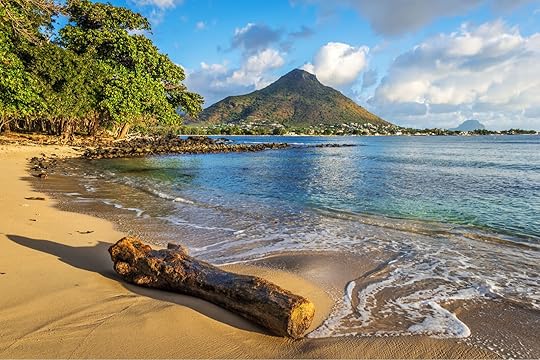
Photo: Ppictures/Shutterstock
Popular Flic en Flac and Wolmar are convenient base towns if your goal is to reach Tamarind Falls, Black River Gorges National Park, or Chamarel Seven Colored Earth Geopark – three popular sights on the western coast. That said, you’ll need to work up the willpower to drag yourself away from the stunning Flic en Flac beach, framed by volcanic mountains that gradually give way to an endless blue-greenish sea. You’ll never get tired of it.
As with most Mauritius beaches, all sorts of water activities are available at Flic en Flac: single and tandem kayaking, stand-up paddleboarding, parasailing, pedal boating, and bottom-glass boat tours. The only thing you can’t do is jet ski. It’s been banned on the island since 2016 as it can cause damage to the shallow reefs.
There are massive resort hotels around here, and if that’s your thing, La Pirogue is worth your time. Otherwise, Les 2 Canons is a more intimate option with an unforgettable sea-front infinity pool. For dinner, consider Sunset Garden, with an extensive menu and boozy cocktails, or Canne à Sucre, where a full Mauritian tasting menu is about $22.
Best southern coast beach: Le Morne
Photo: My Mauritius Travel
After admiring Le Morne’s Brabant Mountain from Flic en Flac, you’ll probably want to get closer, so how about basing yourself in the south for a few days? The Le Morne peninsula is as gorgeous as they come. Though stellar resorts with serious price tags, like LUX* Le Morne and JW Marriott Mauritius, dominate most of the shoreline, there’s a great public beach at the foot of the mountain. It’s a good option if you stay further away or visit as a day trip. Le Morne is also one of the best Mauritius beaches for kitesurfing – in fact, it’s one of the best in the world if that’s your thing. Horseback riding through the surf is also a popular activity, given the stunning backdrop.
You’ll have truly glorious views of the coast from the summit of Le Morne Brabant. It’s a UNESCO World Heritage Site because of its history: in the 1830s, it was where slaves (who, unbeknownst to them, had just been freed) gathered to escape police. It’s a symbol of the quest for freedom in the country’s colonial past. The hike to the summit is roughly two miles each way and gains about 1,600 feet. You can always stop at the plateau at the midpoint for good views, which cuts out most of the demanding parts of the climb.
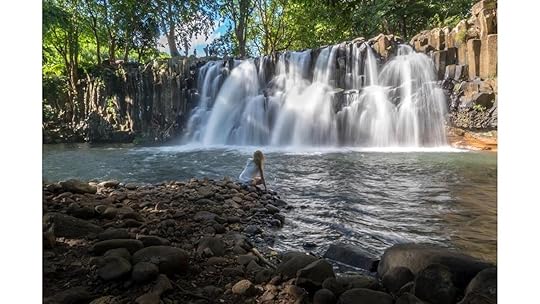
Photo: My Mauritius Travel
The rest of the southern coast is less developed, with choppier waves and swells as there’s no reef. It’s where you’ll find the Maconde sunset viewpoint; surreal Riambel Beach (where a bay meets the ocean), and Gris Gris, which is the starting point for the walk to Rochester Falls – the widest falls on the island with a swimming hole at the bottom. They’re all worth a visit before saying au revoir to Mauritius.
Getting to and around Mauritius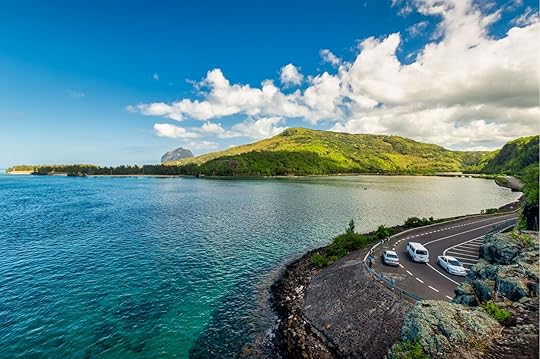
Photo: Chris van der Voet/Shutterstock
Mauritius has been open for travel since October 20201. And as of March 2022, fully vaccinated travelers don’t need to take a pre-departure COVID test (though they’ll likely be tested at the airport). The Mauritius tourism website details the specifics.
All flights come into Sir Seewoosagur Ramgoolam International Airport. Unlike in many countries, the airport’s currency exchange booth will likely give you the best rate on the island. As of this article’s publication, one dollar US equals 43 Mauritian rupees.
You can usually rent a car on the island for about $25 a day – highly recommended if you’re traveling around the coast to visit the beaches above – or rent scooters by the day or week if you’re staying primarily in one place.
Costs in Mauritius vs. Seychelles or Maldives
Photo: My Mauritius Travel
In general, Mauritius is far cheaper than Maldives, partially because you have a choice of hotels in any given spot. Maldives has a “one hotel per island” mentality, which makes for some stunning hotels but means you have only one option in most places. You also don’t have to island hop in Mauritius, which also saves money on seaplanes and ferries, not to mention time. Street food is also becoming popular, so you can stop on the side of the road while driving instead of being limited to expensive resort restaurants. And Mauritius tends to be less expensive than luxurious nearby destinations like the Seychelles, so you may find your overall Mauritius vacation to be a good deal cheaper, even if the flight costs a bit more. 
More like thisWhere to StayThis Underwater Villa in the Maldives Lets You Sleep With Sharks
How To Make the Most of Vail No Matter the Season, According To a Veteran Concierge
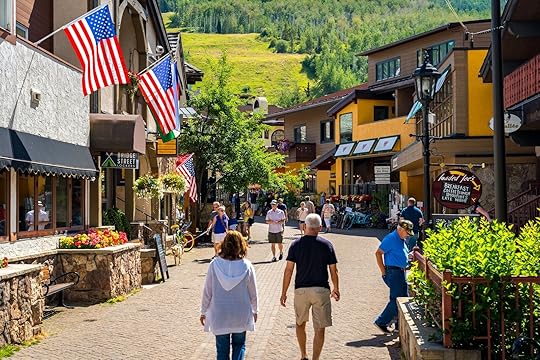
In the heart of one of the most famous ski towns in the world, Sonnenalp Vail is a sought after place to stay in Colorado’s Rocky Mountains. And with that popularity comes a staff that has an answer for just about every Vail-related query you could have.
The family-run hotel brings charming European hospitality to the resort town with its 112 luxury suites and 15 hotel rooms — each of which has a view of Vail Village or Gore Creek. Sonnenalp organizes guided multi-level hiking tours through White River National Forest, scenic picnic hikes on trails across from Vail Mountain, dining experiences in mountain yurts, and sunrise and sunset stretch classes — to mention just a few things. One good description is the German word gemutlichkeit, which loosely means a feeling of abundant warmth that makes you feel special. Gemutlichkeit has helped the hotel earn plenty of return visitors, including one who has stayed fro more than 4,000 nights.
We spoke with Victor Rossi, Sonnenalp’s chief concierge who has worked in the area for more than two decades. Here, he gives us the inside scoop on what makes a stay at Sonnenalp special, as well as what to do in the winter and summer months (yes, this is a ski town that’s can be just as enjoyable when the snow melts thanks to golf courses, swimming pools, and plenty of seasonal ingredients in the restaurants).
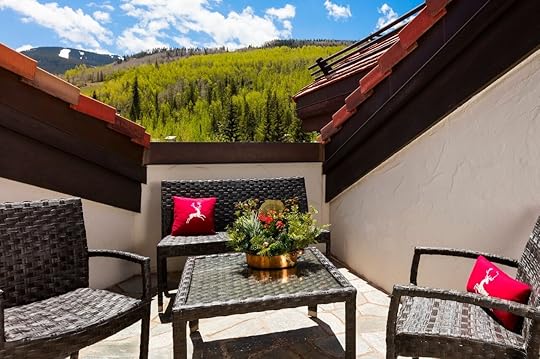
Photo: Sonnenalp
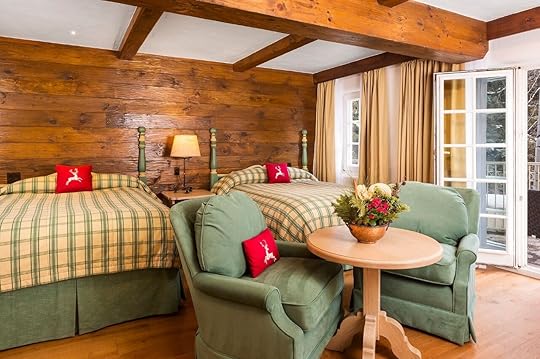
Photo: Sonnenalp
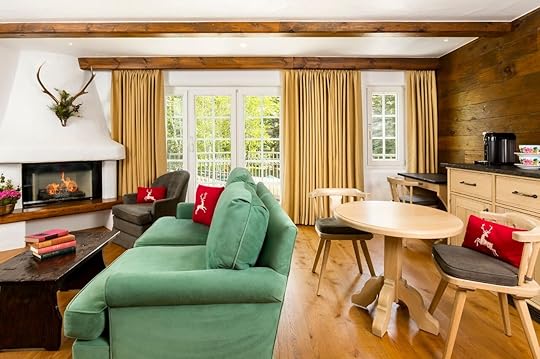
Photo: Sonnenalp
This interview has been edited for length and clarity.
Matador Network: What does your day-to-day look like?Victor Rossi: It depends on the specific time of year, but our profession is becoming more and more in demand year-round regardless of the month. Our guest requests range from A to Z. Restaurant requests and transportation are common of course, but local Vail activities are the majority of what people need help to plan.
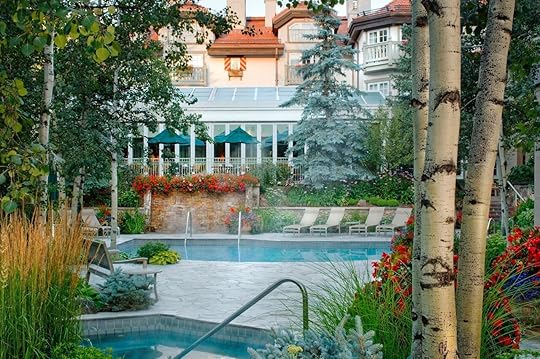
Outdoor pool in summer. Photo: Sonnenalp
It’s easy to describe Vail as idyllic, but how do you describe the town?They modeled Vail after the classic Alpine European villages. Our hotel stands out as a warm, inviting lodge that would be a common sight in the Bavarian Alps. Vail has modernized over the years with heated cobblestone streets, electric buses, and high-speed lifts for quick mountain access. Shops and restaurants are plentiful and diverse. Vail caters to families, couples, business people, adventure seekers, or individuals seeking a relaxing, more solitary experience. Everyone can find what they’re looking for with a vacation here.
The restaurants at Sonnenalp are very popular. Can you tell us about your in-house dining options?We offer a diverse choice of dining at the Sonnenalp. With three premier restaurants and a fantastic popular lounge, we can satisfy every request without having to leave the comfort of the hotel.

Swiss Chalet restaurant. Photo: Sonnenalp

Photo: Sonnenalp

Photo: Sonnenalp
The Swiss Chalet specializes in Alpine-style cuisine, specifically raclette and fondue. It offers an ambiance that makes you feel like you’re in a chalet in the Alps.
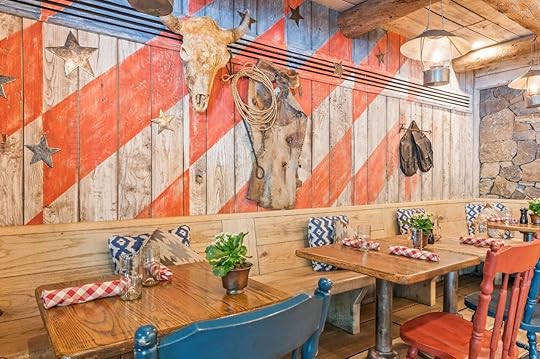
Bully Ranch. Photo: Sonnenalp
Bully Ranch is a pub-style restaurant with a Colorado, Western ambiance, and fantastic casual American cuisine.
Our Ludwig’s Stuberl is a winter-only, seasonal dining experience with an elegant, romantic ambiance. It features locally sourced, regional American cuisine. We also have to mention our famous Ludwig’s breakfast buffet, which is hands down the best breakfast in Vail.

Ludwig’s breakfast buffet. Photo: Sonnenalp

Photo: Sonnenalp
Our Harvest Restaurant, at our beautiful Sonnenalp Golf Club in Edwards about 13 miles away, offers fantastic regional American cuisine and the best views in the Vail Valley.

Sonnenalp Golf Club. Photo: Sonnenalp
Finally, our King’s club lounge has intimate couch seating, a roaring fireplace, live music, and some of the best drinks in town.
How does the hotel, and Vail in general, cater to families?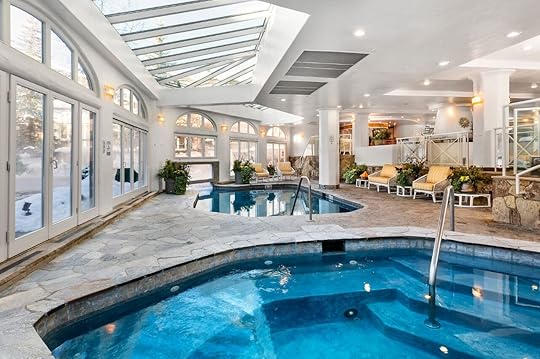
Indoor pool in the Sonnenalp Spa. Photo: Sonnenalp
Our beautiful heated indoor and outdoor pools are popular with families. The indoor pool is in our elegant Sonnenalp Spa, so we urge “quiet time” for our relaxing spa guests.

Sonnenalp Kidventures program. Photo: Sonnenalp
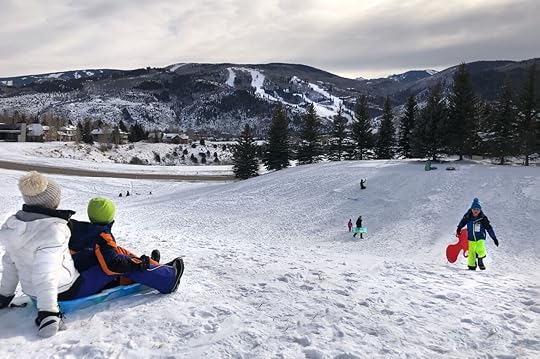
Photo: Sonnenalp
We also have a game room for kids to enjoy entertainment such as ping-pong, air hockey, and foosball. Our Sonnenalp Kidventures program runs nightly and is designed for kids aged four to 12. We offer creative arts and crafts, dinners, and movie nights. Special seasonal activities such as our firepit and smores, holiday cookie decorating, and the occasional visit of the Easter Bunny and Santa Claus are also popular with the little ones.
Vail has several great play parks all in beautiful mountain settings, snow tubing, and sledding in the winter. In summer you can enjoy kid-friendly creek walks, biking, and ATV and Jeep tours.
Where would you recommend for a romantic dinner in Vail?Our wintertime Ludwig’s Stuberl is one of the most romantic venues in Vail.
Another personal favorite is the classic French restaurant called The Left Bank. We have several great French restaurants in Vail, each offering something different. Also, the mountaintop dining at the Game Creek Restaurant is always a special experience.
The hotel is well known for its ski concierge. What’s all included?Our Sonnenalp Ski Concierge is more than just a ski valet. It is located in the charming Gorsuch Cafe at the base of the mountain at the bottom of the gondola.

Sonnenalp’s Exclusive Private Ski Lounge. Photo: Sonnenalp
The service includes transportation of gear to and from the hotel. We also store guests’ belongings slope-side. The hotel partners with the best ski rental facilities in Vail and we can assist with any queries or requests.
What are some of the different activities people can enjoy outside of winter?Most people know the classic statement that the ski mountain brings people to Vail, but it is the summers that keep us here.
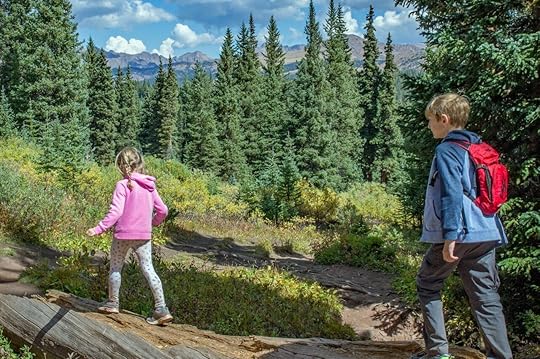
Children hiking in the Rocky Mountains. Photo: Gary Reinwald/Shutterstock

Summer at the Sonnenalp. Photo: Sonnenalp
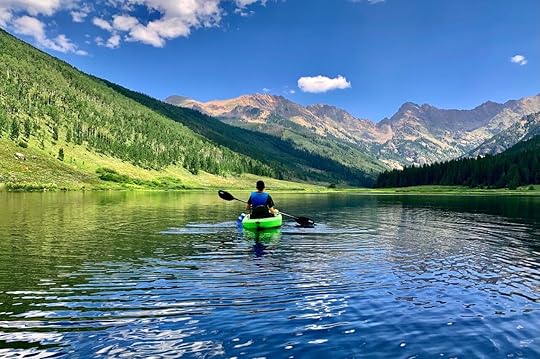
Kayaking on picturesque Piney Lake. Photo: Garrett Rymer/Shutterstock
Outdoor highlights include the most spectacular hiking, from relaxing strolls to Colorado’s 14ers. The mountain biking is some of the best in the world. We also have spectacular river rafting from class I/II to class V. Breathtaking (literally) zip-lining, horseback rides, rock climbing, caving, fly-fishing, golf, scenic railroad tours, and tennis.
There are also fabulous summer food and music festivals and the largest farmers market in the state of Colorado every Sunday just outside the hotel.
If a guest has a request, how far advance do you advise them to reach out?Vail has become more and more popular due to all the reasons explained above and because of the recent boom in tourism.
We recommend giving our concierge team the opportunity to understand exactly what you’re looking for. When making dinner reservations, I recommend reaching out as far in advance as you can. Many of our guests give us two or more months’ notice. In many cases, at least one month is required. Of course, we will do everything we can if given less notice, but using the one-month rule is advised. 
Guide to British sayings and slang

English is the de facto national language of Britain, but that doesn’t mean you’ll take to the vernacular like a duck to water. The locals like their slang more than most, and deciphering it requires expert supervision. This guide to British sayings, funny British phrases, dirty expressions, slang words, and more will not only help you understand what the people of England, Wales, and Scotland are saying, but it’ll also help you pass for a local if need be. Just make sure you use these in the right context — if you’re having tea with the Queen at one of her many residences, keep the crude British sayings listed below under wraps. We wouldn’t want to offend Her Majesty or create a major diplomatic incident.
British phrases and slang words and how to use themThings British people say that Americans don’t understandFunny British sayings and their meaningDirty and rude British sayings and their meaningsBritish phrases and slang words and how to use themBuzzin’Meaning: To be slightly drunk or to be excited
Example of usage: “John’s had a couple of pints; he’s buzzin'” / “Evie’s passed her exams; she’s buzzin'”
Translation: It’s raining heavily
Example of usage and translation: “It’s really chucking it down; I wish I had my brolly” = “It’s raining hard; I wish I had my umbrella”
Translation: Get lost
Alternative: Piss off
Translation: It’s cold outside
Alternative: It’s brass monkeys out
Translation: Did you just fart?
Alternative: Did you just pop?
Translation: I’m going to punch you in the face
That’s pantsMeaning: It’s not great, not very good
I’m knackeredTranslation: I’m exhausted
Bloody hellExplanation:“Bloody Hell” is a term used to express anger, surprise, or shock
Example of usage: “What the bloody hell was that all about?” / “The dog needs to go out again — oh bloody hell” / “Bloody hell, Amie, I think I’m in love with you”
Translation: I’m very disappointed
Example of usage: “I’m gutted, man; I didn’t even have the chance to get her phone number”
Meaning: Being on the pull means to be on the lookout for someone to have sex with during a wild night out
I’m skintTranslation: I have no money
Example of usage: “Sorry, lads, I can’t go to Ibiza with you this spring — I’m skint”
Meaning: A snog is the equivalent of making out. Full-blown, tongue-wrangling kissing.
Taking the MickeyMeaning: Making fun of or teasing someone
Alternatives: Taking the Mick / Taking the Michael / Taking the piss
Example of usage: “Stop taking the Mickey; I love my new yellow raincoat!”
Translation: Utterly astonished
Example of usage: “I was gobsmacked to read that in the papers”
Translation: Don’t be silly
Explanation: This slang phrase usually comes about in conversation when you ask someone a favor or apologize for something trivial
Example of usage: A: “Sorry I ruined your tea, Mark” B: “Oh, don’t be daft”
Translation: This is awesome
Example of usage: “The concert was mint, mate”
Translation: He’s such a nerd
WaffleMeaning: To talk on and on and on and on and on about nothing
SloshedTranslation: Drunk
Alternatives: Shitfaced / Arseholed / Trollied / Legless / Pissed / Battered / Steaming / Hammered / Leathered / Squiffy / Lubricated / Rat-arsed / Pickled / Well-oiled / Merry, etc.
Meaning: To bodge something together means to do/write/make something quickly so that it’ll just about do. It usually isn’t good enough and probably won’t last.
Telling porkiesTranslation: Telling lies
Explanation: This slang phrase comes from the Cockney rhyming slang “pork pies” which rhymes with “lies”
Meaning: To say horrible things about someone behind their back
Wacky-backyMeaning: Weed, pot
Explanation: The term is a little bit old-fashioned. Don’t use it if you want to look cool.
Meaning: When someone faffs around they are taking their time and not doing much
Alternatives: Fannying / Fannying around
Example of usage: “Oh my God, sorry we’re late. Tom was faffing about.”
Meaning: Being smarmy means that you hold a certain attitude often accompanied by an air of superiority that instantly makes people dislike you
JammyTranslation: Lucky
Not too shabbyTranslation: Not bad
You alright?Translation: How are you?
ChippyMeaning: The fish and chips shop, i.e. a no-nonsense place where you can get a bag full of fries, with pies, sausages, and fried cod or haddock
Things British people say that Americans don’t understandTeaExplanation: In the north of England, “tea” is another word for dinner
DinnerExplanation: Again, in the north of England, “dinner” means lunch
I’ve got the humpMeaning: Feeling blue and grumpy
Explanation: This British expression often refers to feeling grumpy for no real reason
Note: Be careful with the word “hump” because to hump someone means to have sex
Meaning: Going to bed
Explanation: Heading up the wooden hill (the stairs) to Bedfordshire (bed)
Meaning: I need to take care of some business, and I don’t necessarily want to share all the details
Let’s have a butcher’sTranslation: Let’s have a look
Explanation: This slang phrase comes from the Cockney rhyming slang “Let’s have a butcher’s hook” which rhymes with “look”
Example of usage: “Let’s have a butcher’s at your new dress”
Translation: I’m going to the bathroom
Alternative: I’m going for a slash
Translation: Nothing
Example of usage: “My boyfriend got me Sweet Fanny Adams for Valentine’s Day. Can you believe it?”
Translation: He’s good looking
Going up the apples and pearsTranslation: Going up the stairs
Explanation: This slang phrase is an example Cockney rhyming slang as “apples and pears” rhymes with “stairs”
Translation: You’re a loud know-it-all
Example of usage: “You don’t know what you’re talking about; you’re all bum and parsley”
Meaning: She’s not very bright
Alternative: She’s a slice short of a loaf / She’s not the full shilling
Meaning: To pop one’s clogs is a euphemism for dying or death
That went down a treatTranslation: It was very enjoyable
Example of usage: “That cake went down a treat”
Meaning: Very cheap, or a bargain
Example of usage: “Only a fiver for a concert ticket — cheap as chips, mate!”
Meaning: If you take care not to waste small amounts of money, then it will accumulate into something more substantial
Happy as a pig in muckTranslation: Very happy
Example of usage: “When he’s left alone to read, he’s happy as a pig in muck”
Translation: I don’t care
Example of usage: “I don’t give a monkey’s about your baby’s sleeping schedule”
Translation: That’s it
Example of usage: “That’s the badger! That’s the name I could not remember!”
Translation: There, you have it
Example of usage: “Just flick that switch and Bob’s your uncle”
Translation: To do a bad job
Example of usage: “He made a right pig’s ear of this plumbing job. Everything’s leaking!”
Meaning: This is the British equivalent of “That’s what she said.” It highlights a sexual reference, whether it was deliberate or not.
Example of usage: “Blimey, that’s a big one — as the actress said to the bishop”
Meaning: For fun
Pull your finger out of your arseMeaning: Get on with it
Bollocks!Translation: Oops, shit, f*ck, crap, oh no
You’ve got your knickers in a twistTranslation: You’re overreacting
Careful, he’s on the chunder busTranslation: Watch out, he’s going to throw up
He’s the dog’s bollocksTranslation: He’s great
Alternatives: He’s the dog’s danglies / He’s the mutt’s nuts
Translation: He’s an idiot
Alternatives: He’s such a ponce / pillock / tosser / twit / knob / bellend
Meaning: To get told off
I can’t be arsedTranslation: I can’t be bothered
Arse about faceTranslation: Back to front
They don’t know their arse from their elbowTranslation: They are stupid
It’s piss poorTranslation: It’s not very good
On the pissMeaning: Going out on the town with your mates to get drunk
Example of usage: “We have not seen Alice all evening. She’s been on the piss with the girls from school.”
Meaning: Sex
Alternatives: Slap and tickle / Bang / Bonk / Rumpy-pumpy / A bit of how’s ya father / A good rogering
Example of usage: “God, I can’t believe I almost shagged that guy last night.”
Explanation: Something got messed up
Alternative: It’s all gone pear-shaped
Example of usage: “We went to the theater and all the actors forgot their lines and the orchestra played the wrong songs. What a cock up!”
Translation: I fell very badly 
This article is the combined work of five writers: Cory Varga, Lauren Williams, Susannah Rigg, Stacy Ullenes, and Alice Latham.
More like thisLanguages18 Slang Expressions in Northern English (and How To Use Them)Watch: What It’s Like To Thru-Hike the Continental Divide From Mexico To Canada
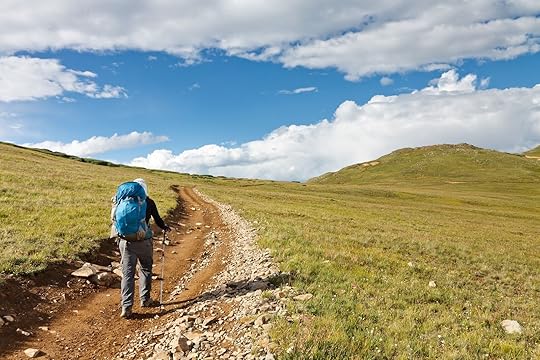
Some of us are short-length hikers who prefer trails that aren’t too far from home, or maybe enjoy a nice hike when on vacation. Then there are those who take it up a couple levels — as in those who turn their hikes into country-hopping adventures, like this group that made a short video of their hike across the entirety of the Continental Divide Trail.
The Continental Divide Trail is a 3,100-mile trail that goes from Mexico and through five US states — New Mexico, Colorado, Wyoming, Idaho, and Montana — before reaching Canada. It takes an average at least six months to get through the whole thing. The path is made for adventurers open to traveling through 25 national forests, 21 wilderness areas, three national parks, and one national monument.
The name comes from the Great Continental Divide, a drainage divide that starts at the Bering Strait (between Alaska and Russia) to the Strait of Magellan (at the southern tip of South America). In the US, the Great Continental Divide drainage separates water between the Pacific and the Atlantic Ocean. The creators of the video are also behind the blog Halfway Anywhere. Mac, the creator of Halfway Anywhere, completed the Continental Divide Trail in 2017 and he documented his adventures with a one-second video each day and put them together in a four-minute montage.
Of course, if you’re looking for an international adventure, there are some tremendous thru-hiking trails around the world for every season, including Te Araroa in New Zealand in the spring, Kungsleden in Sweden in the summer, the Annapurna Circuit in Nepal in the fall, and the MacLehose Trail in Hong Kong in the winter. Of course, if you’re going to do one of these long hikes, you’ll want to be prepared to get through it. Make sure to pack the essentials like the right shoes and clothing and all your trip information. And be sure when you go on long trips like this to be respectful to other people on the trails and Mother Nature. Thru-hikes might seem intimidating, but if you’re fully prepared, you may find yourself ready to complete the ultimate adventure. 
How and Where To See the Blood Moon Total Lunar Eclipse This Month
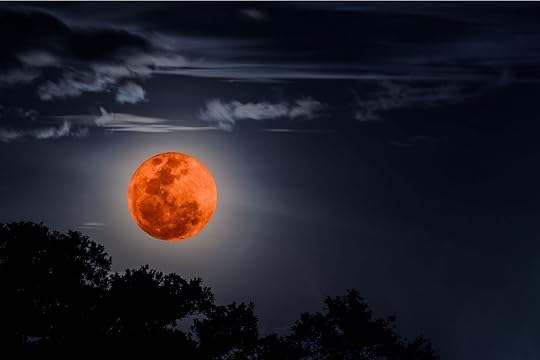
We hope you love the hotels we recommend for seeing the eclipse this month! Just so you know, Matador may collect a small commission from the links on this page if you decide to book a stay.
Grab your binoculars, astronomy buffs — a blood moon is coming. Between the evening of May 15 and the morning of May 16, depending on your time zone, the first total lunar eclipse of 2022 is going to grace the skies and turn the moon a rusty shade of red.
A total lunar eclipse, or blood moon, occurs when Earth passes between the sun and the moon and casts its shadow completely across the moon’s surface. When fully eclipsed, the moon appears to take on a reddish hue, hence the phenomenon’s nickname. Lunar eclipses only occur during full moons, but this particular eclipse coincides with a supermoon, meaning the moon will also be at the closest point in its orbit to Earth and appear slightly larger in the night sky.
May’s blood moon will be the first of two total lunar eclipses to occur in 2022, with the second falling in November. The event will kick off with a penumbral eclipse on May 15 at 9:32 PM EST before transitioning to a partial lunar eclipse at 10:27 PM. Totality, when the moon is fully engulfed by Earth’s shadow, will begin at 11:29 PM and last roughly 1.5 hours, with the maximum eclipse taking place at 12:11 AM on May 16. This is when the moon will appear the reddest.
Skywatchers all over the world will be able to see at least part of the eclipse. It’ll be visible across North and South America, South and West Europe, South and West Asia, Africa, and Antarctica, as well as from the Pacific, Atlantic, and Indian Oceans. Anyone in the eastern half of the US will be able to see the entire eclipse from start to finish if the sky is clear. Optimal viewing decreases the closer you get to the west coast, but some or all of the totality will be visible throughout the entire Lower 48.
If you want to make an event out of this month’s blood moon total lunar eclipse, consider planning a trip to New York, Tennessee, or Arizona. The following hotels have plans to harness the energy of the blood moon and give guests the ultimate viewing experience.
Where to see the blood moon total lunar eclipse this MayInns of Aurora — Aurora, New York
Photo: Inns of Aurora
This boutique hotel in New York’s Finger Lakes region is actually a collection of five historic inns on the shores of Cayuga Lake. Guests have their pick of eclipse-centric activities here. You can take a Lantern-Lit Hike across the property that culminates in a stargazing session around a bonfire. You could also spend the evening meditating to the moon at the resort’s spa — or even buy the place out starting at $7,500 to gaze up at the sky from an outdoor hydrotherapy pool — before catching the eclipse by the resort’s lakeside firepit.
The Joseph, a Luxury Collection Hotel — Nashville, Tennessee
Photo: Courtesy of The Joseph, a Luxury Collection Hotel, Nashville
Book The Joseph’s Moon Bath Experience on the evening of the eclipse, and downtown Nashville will fade away as effortlessly as the moonlight. An in-room treatment, the Moon Bath is available to any guest staying in a suite with a deep soaking tub, which will be filled with a bath tea corresponding to one of the moon’s cycles: new, waxing, waning, or full. Along with the bath tea, guests will be given bathing salts, a botanical face mist, and a Moon Bath Intention Guide.
ADERO Scottsdale — Scottsdale, Arizona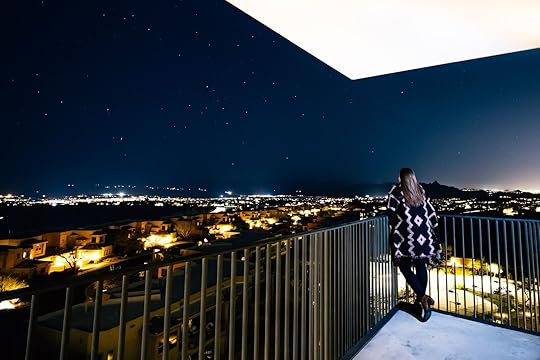
Photo: Aqua-Aston Hospitality
ADERO Scottsdale is located in a certified Dark Sky Community in the Sonoran Desert, meaning it has less light pollution than the average hotel and is therefore ideal for eclipse-gazing. Guests can also have high-definition telescopes delivered to their rooms, download the Star Walk 2 app to help make sense of all things celestial, or arrange a stargazing session with a group of local Dark Sky experts. Of course, there’s also the open-air SkyTop cocktail bar if you’d rather relax with a cocktail while you wait for nightfall.
Hyatt Regency Scottsdale Resort & Spa — Scottsdale, Arizona
Photo: Hyatt Regency Scottsdale Resort & Spa
For one night only, guests of the Hyatt Regency Scottsdale Resort & Spa can participate in a guided full moon meditation under the reddening orb of the total lunar eclipse. The experience kicks off in the resort’s Desert Garden, includes a Crystal Bowl Sound experience, and winds down with live music and cocktails by the resort’s firepits. 
Matador Network's Blog
- Matador Network's profile
- 6 followers



